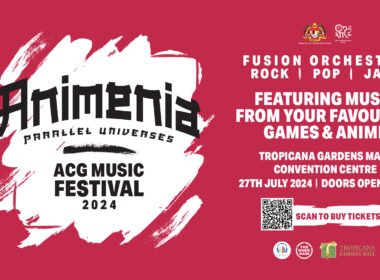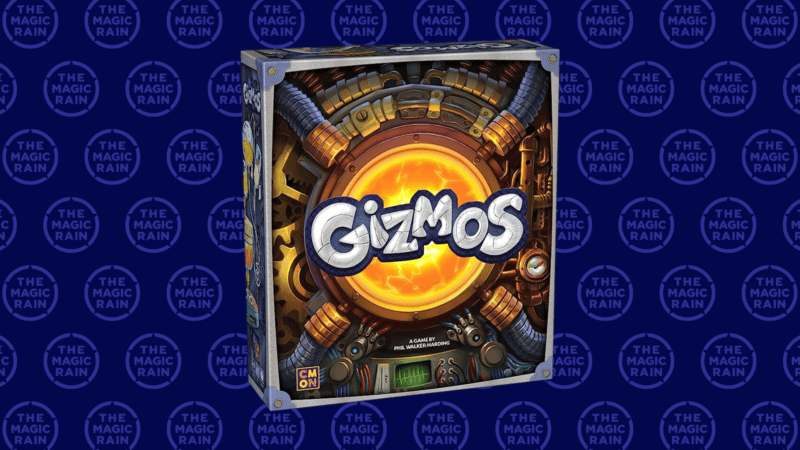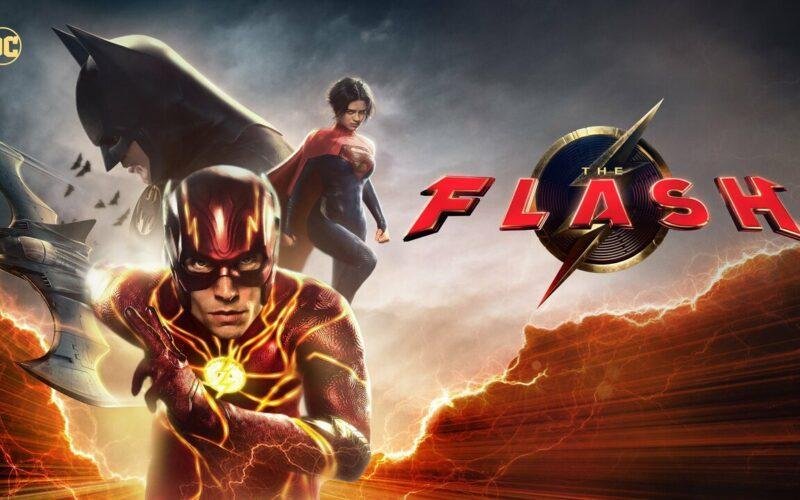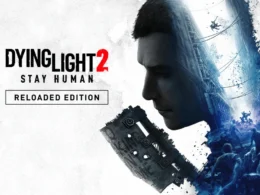I am back with another board game review and this time it is a little different from other board games. I have played a lot of “deck building” board games like Dominion, Star Realms, Ascension, and others, but this is the first time that I have truly encountered a unique “deck building” board game. The game in question is Gizmos by CMON Global Limited, the same publisher as the Zombicide board game. Again, thank you to Any Games Con for lending us the game for the review.
Just like the previous game, I preface the review by saying that we did not know anything about the game and went into the game blind, learning by reading the booklet and by playing along with the game.
The Game
Gizmos is easy to learn but difficult to pick up on the first play. Although the tutorial book is simple in the explanation, the amount of card token emblems and signs are too plentiful that it would be hard to know what each one means without any references on hand. Still, we had the reference page with us on the side and played along to understand what each invention does. Even then, we had to reference it more than once throughout the game.
The game is played between 2 to 4 people where each player will receive a board to represent their workshop. This is where they will put the inventions they “Build” into. Each player can take 1 action out of 4 different actions, “Archive”, “Pick”, “Build” and “Research”.
A mechanism similar to a dice tower that rolls out “Energy” in the form of marbles is set up, and set aside near enough that the players can reach it. The invention decks for each Tier I, Tier II and Tier II are laid out in the middle for all the players to see, with each Tiers having different amounts laid out.
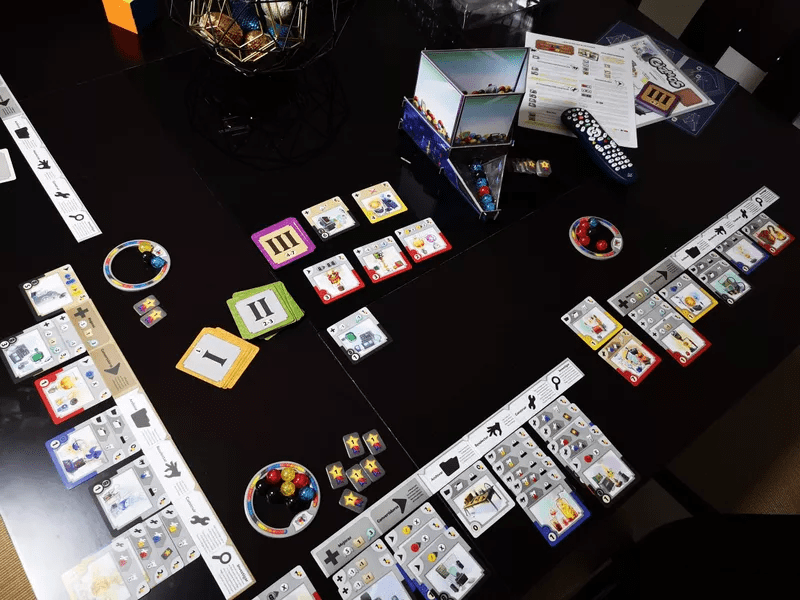
As mentioned, players can choose to do one of the 4 Actions available to them during each of their turns. “Archive”, is picking an invention available and setting it aside for later, while “Pick” is choosing a marble which represents “Energy” that is available from the mechanism to be set aside for later.
“Build” is building an invention, either in archive, researched or what is available, by paying with the Energy the player has saved up, while “Research” has the player looking at the top 3 cards of an invention deck to either archive or build one of them.
What makes the game interesting are the inventions itself, where the players race to build or archive each turn. The more inventions the players build, the more it affects the actions the players take. For instance, there is an invention that says, when the player builds a yellow invention, they get to “Pick” an Energy, or an invention that can convert an Energy from one colour to another to help them build.
Each invention also comes with certain points which the players have to collect and count at the end of the game. The player with the most points, wins the game.
What did I like?
The game itself is an innovation on deck building games. While typical games have you buy cards to stack your deck so you can play them and get points, the inventions in this game are always available once built, and are themselves points.
In a way, you are building a deck of inventions which affects each of your actions, but they are always available in front of you instead of relying on the luck of the draw. In this game, luck comes from the inventions being laid out in front of everyone, and Energy that comes out from the mechanism.
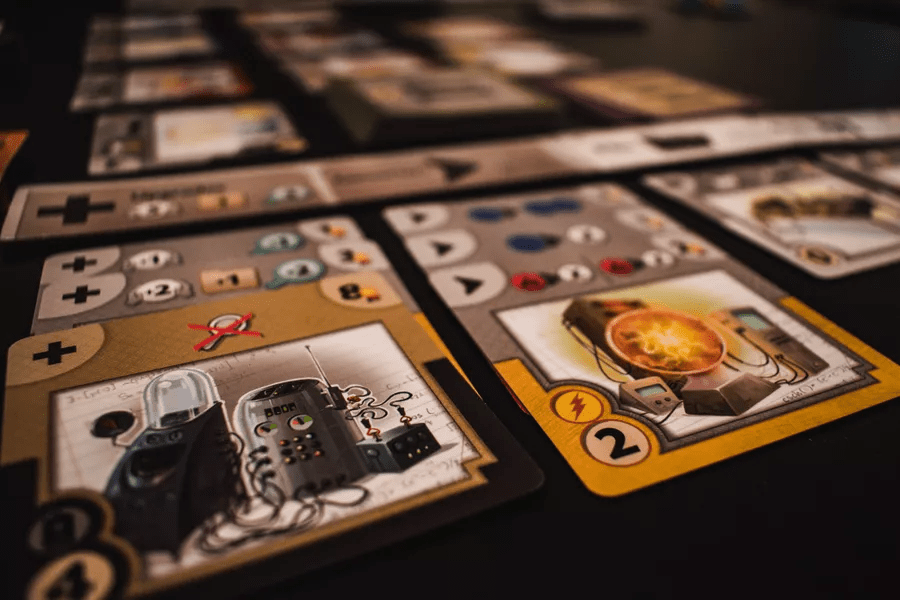
The main thing that I like about the game are the inventions themselves, which is the integral part of the game. Each invention that players build affects the actions that you take, so much so that towards the late-game, each player may only take one action per turn, but with the trigger of each invention that they have built, they can take multiple actions instead.
The decision making for what to do each turn becomes crucial and strategic at the beginning of the game, as each player only has one “Action” per turn. As the game goes on, the players’ decision to build certain inventions becomes more calculated, as each inventions leads them to taking better “Actions”.
At the later part of the game, players start to rush to taking actions that may lead them to taking more points which can lead them to victory. Every turn becomes a mind game as the players plan the best decision to affect their future turns while try to hinder other players.
What did I not like?
The art and pieces of the game seem outdated for a game that came out only 5 years ago in 2018. Although the art tries to bring out a quirky and comicky style, it seems very outdated and looks like a game that came out in the 90s.
The only saving grace of the piece designs are the marbles that represent Energy. Although it looks dull and without glimmer, they have a weight to them. For an innovative and unique game, the pieces and art do not bring out the game to life but instead seems like you are playing a board game and nothing more.
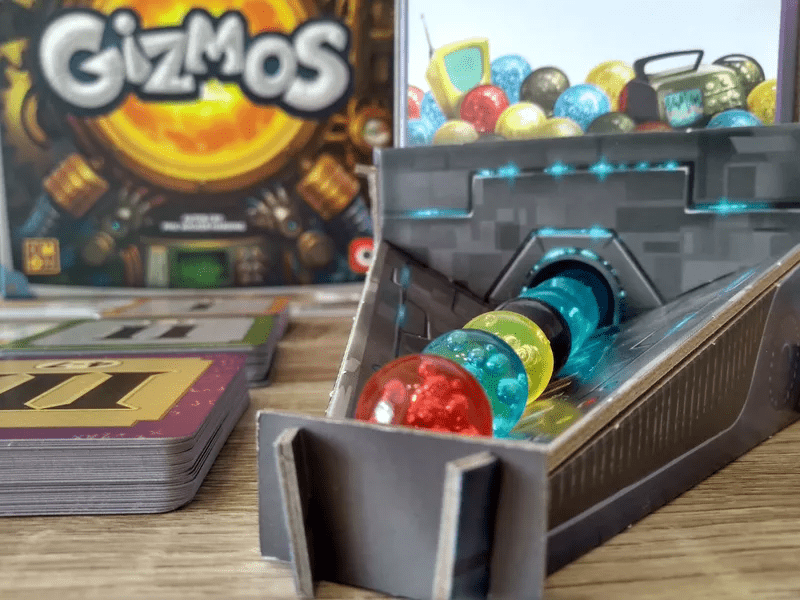
Since the game is about strategic planning, and at the same time, a player versus player (“PVP”) game, the game becomes quiet as each player focuses on thinking about what action to take and which inventions are important to them.
Although most PVP board games are similar to this, I myself prefer games that are more interactive and exciting like Kings of Tokyo, Smash Up, or Blood Bowl Team Manager. Board games are about the interactions between people which set themselves apart from other type of games like Console or PC Games, thus the board game lacking interaction is very apparent.
Lastly, the thing I find most concerning about the game is that the board game becomes solved after a few times playing, thus cutting the replayability of the game. After a few games, the players already knows which inventions are more important to build and the train of thought becomes linear.
The game then becomes a solitaire with each player quickly taking their actions quietly as they plan their future actions. I recommend that the game being played sparsely to maintain the element of surprise and prolong the game as a whole.
The Verdict
Overall, it’s a very innovative and uniquely designed game with a new take on an already-oversaturated genre of board games, the deck building genre. If you like games where you strategize and think ahead to make the best of each turn to come out on top, then this is the game for you.
Unfortunately, the dull and quiet nature of the game is a great turn-off for me as I prefer games where I can talk and interact with the other players. All in all, I give it 6 pies out of 10.
Image credit to Board Game Geek. Board game provided by Any Games Con, and you can check out their event at https://www.anygame.fun/ticket


